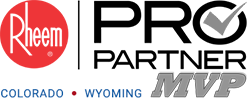
If you’re thinking about installing a geothermal system, you might be wondering: Do I have enough room on my property for a geothermal installation? Will my landscaping interfere with the “loop field”? And is my soil conducive to the undertaking?
Most homeowners considering installing a geothermal system face a choice between two closed-loop systems: a horizontal loop or a vertical system. Each holds the promise of minimizing your reliance on fossil fuels and reducing your energy bills by between 25 percent and 50 percent.
With a closed-loop system:
- The soil is yielding enough that underground trenches of 3 to 6 feet deep can be dug.
- The two pipes are either buried at 6 feet and 4 feet deep or the pipes are buried in a 2-foot-wide trench at 5 feet deep.
- About 400 to 600 feet of looping is needed for each ton of energy required to heat or cool a home. Most midsize homes require a 3-ton unit, so between 1,200 and 1,800 feet of looping would be needed.
With a vertical loop system:
- Narrow trenches are dug from between 150 and 450 feet underground, with pipes that create a U-shape.
- The soil may be too shallow or cumbersome for trenching.
- Less disturbance is required of existing landscaping.
In addition to the size of your property and the layout and complexity of your landscaping, you also must consider the location of underground utilities or a sprinkler system. For these and other reasons, horizontal ground loops are often used for new construction unless the “Slinky method” of looping pipes is used. As the name implies, this method allows for more pipe to fit in a shorter trench. Vertical loops are most often employed for existing construction.
Geothermal installation is a complex process that requires an experienced contractor who knows his or her way around a loop field. Contact the Rheem Pro Partner to get started. Serving areas of Colorado and Wyoming, we’re happy to help.
Geothermal image via Shutterstock


